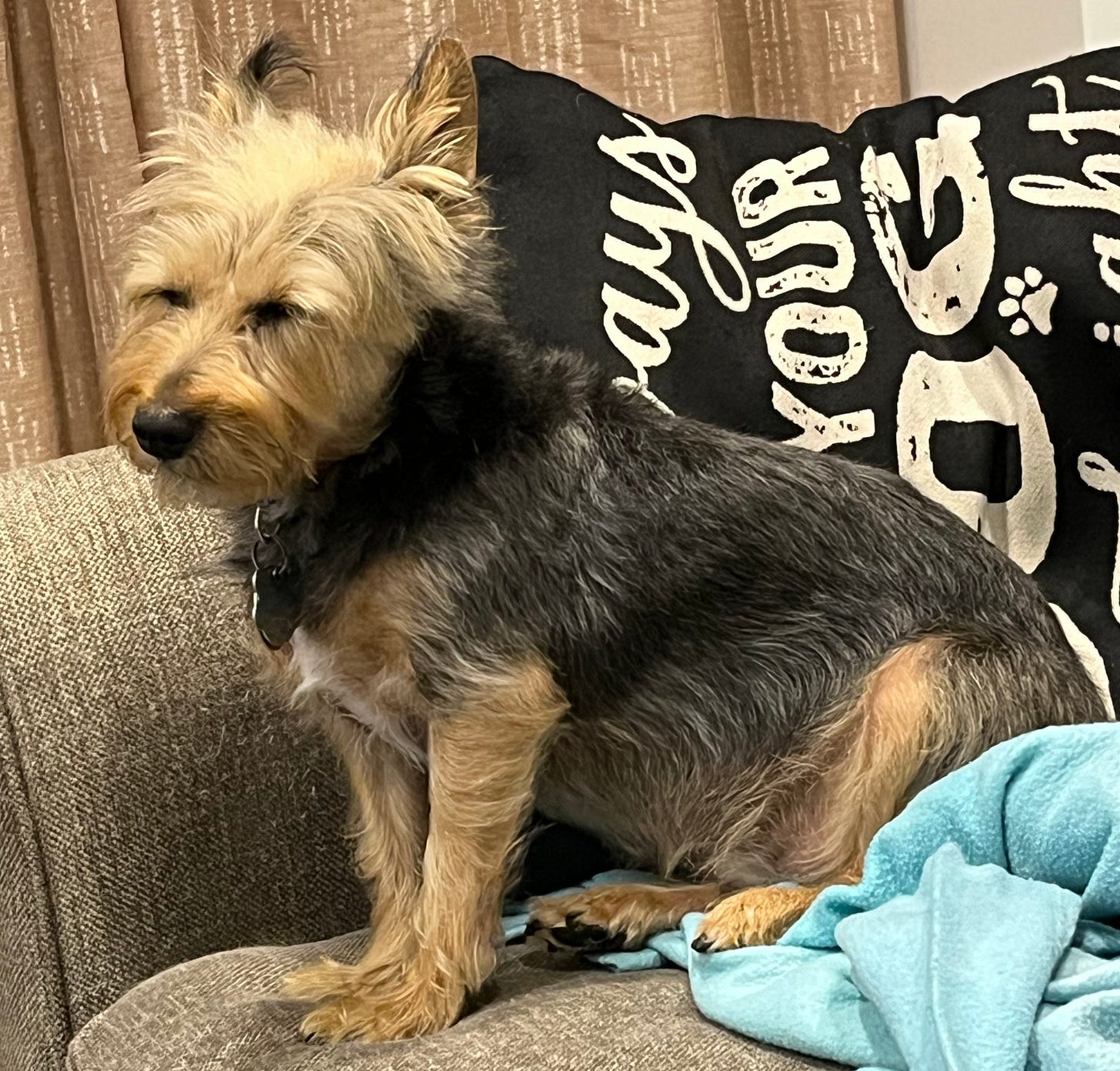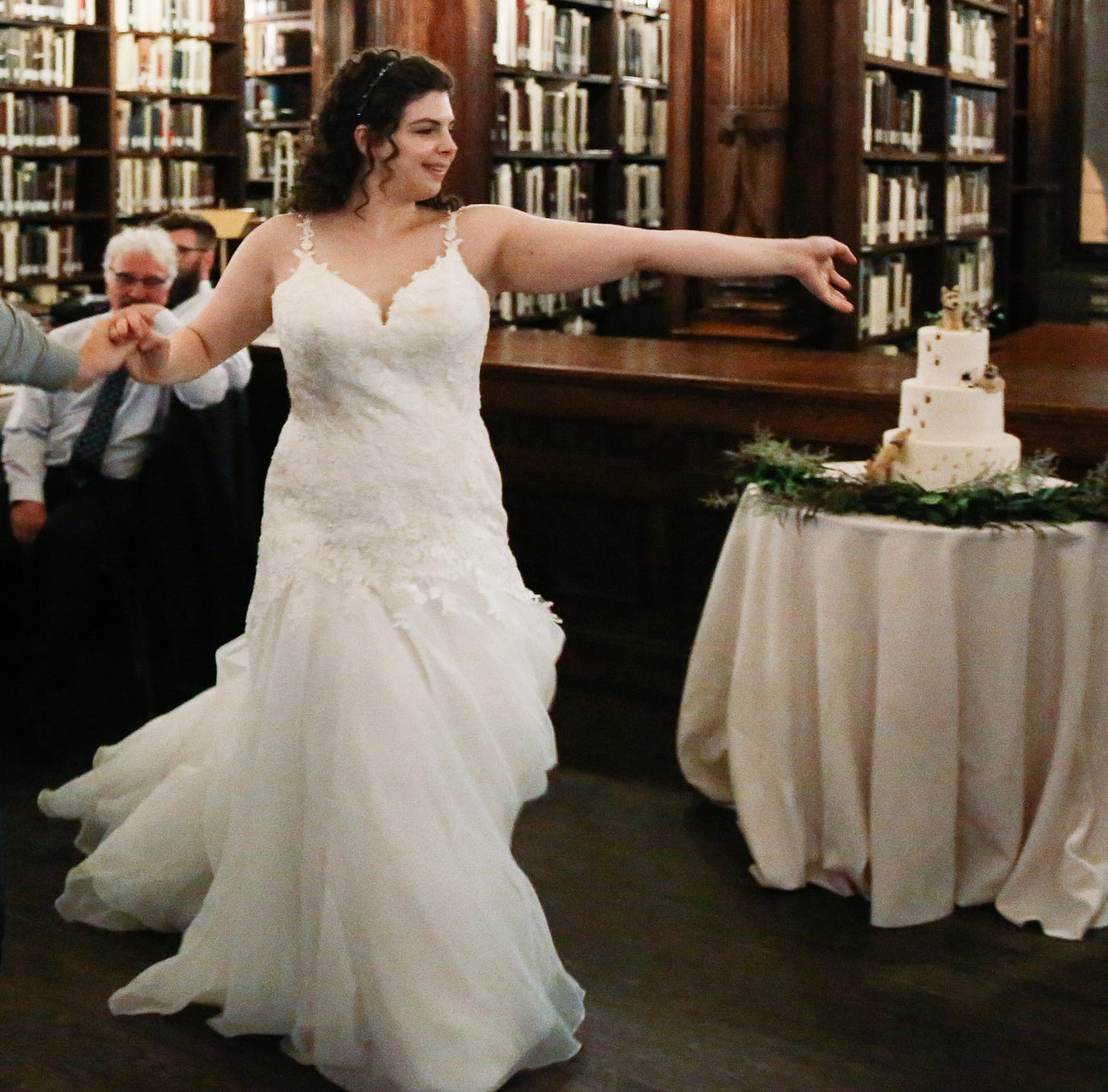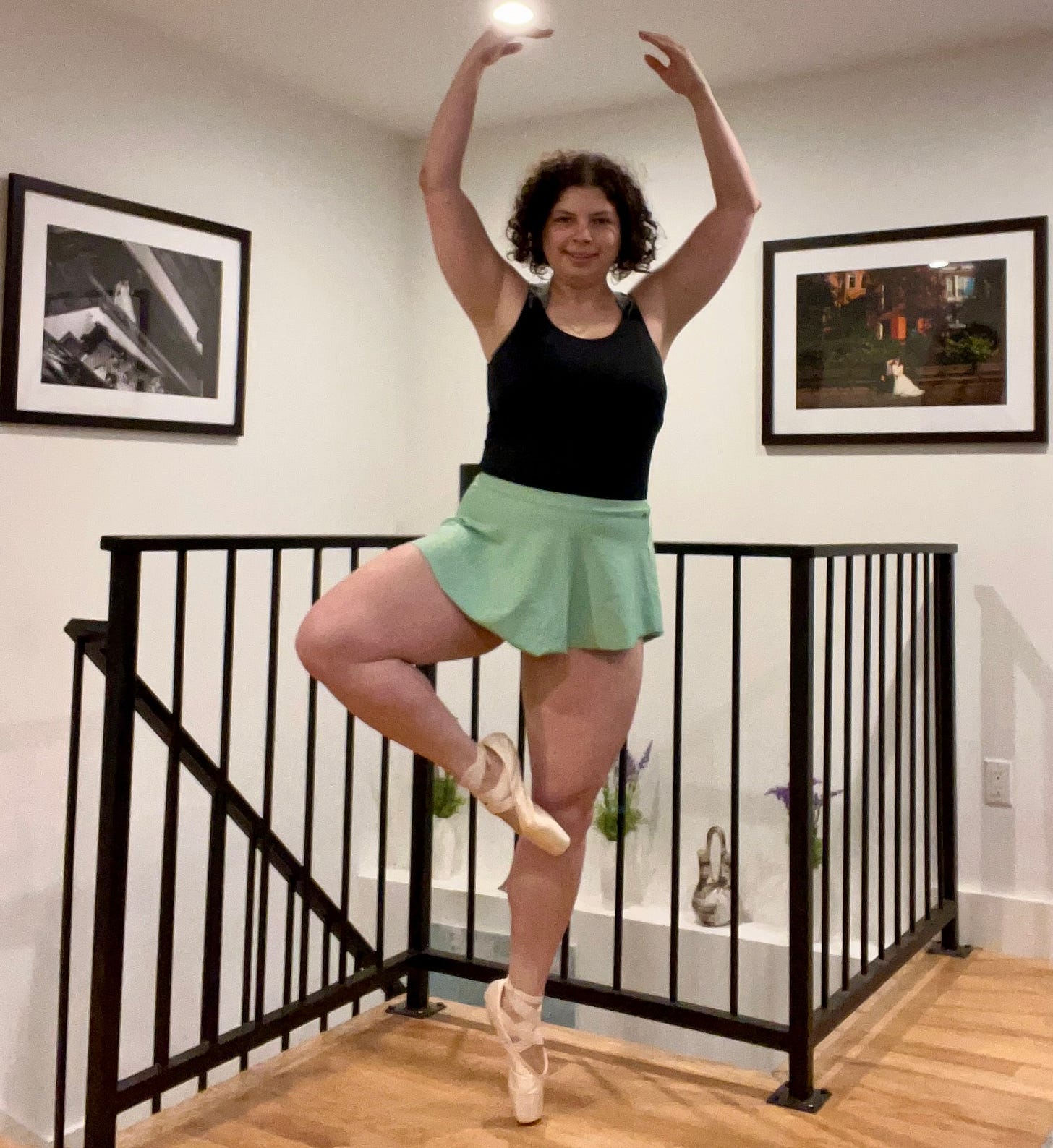When’s the last time you tried balancing on one foot? Maybe you’ve gotten good at it over years of yoga and now you’re a tree pose master. Maybe you just remember all the tricks from middle school gym class—hold your arm out in front of you, focus on one thing that’s not moving, and so on.
But balancing with your eyes closed is way harder than it has any right to be. Vision is a huge portion of what gives us our sense of balance; close your eyes while just standing normally and you’ll immediately start to sway.
To stand on one foot with your eyes closed, you need to have an extremely good awareness of your own body. If you haven’t trained yourself to do it, you probably can’t.
Go ahead and try it for yourself now. I’ll wait.

I have a complicated history with ballet. Apparently as a very small child, I loved it. I even went to ballet camp, where we learned about different famous ballets and even did worksheets on them.
Then one day, I announced I hated ballet and would never do it again. My mom thinks someone was mean to me at ballet camp. I have no memory of this, but it sounds plausible.
For the rest of my childhood, I did other forms of dance and gymnastics, but I always insisted that ballet was boring. When I was a teenager, I realized how much I’d missed in terms of a foundation for movement by skipping ballet, and I took it back up again my last semester of college.
Most people who know me know I’m deeply clumsy. I’m functionally a brain on a stick. Growing up, I regularly had bruises at doorknob height and coffee table height because I was thinking about anything else but where my body was in space as I moved around my house.
Doing ballet as an adult slowly taught me how to be aware of my own body. I’ve spent years staring at a mirror while moving my arm, trying to match the visual input of a port de bras with the physical sensation of muscles contracting in sync. Little by little, I built some modicum of grace, finally getting me to the point where I could dance at my wedding without being an awkward wreck. I don’t think I could have done it without ballet.
When my ballet teacher first floated the idea of dancing en pointe a year ago, I thought she was joking. I have a long history of foot problems, from bunions (genetic) to plantar fasciitis (from walking around New York City for years in unsupportive shoes) to tendonitis (from walking around my apartment all day during my work from home pandemic years wearing no shoes at all).
So I politely said no, thank you…and then kept thinking about it for weeks. I’m achievement-oriented by nature, and for ballet dancers, pointe is of course the highest achievement. And my teacher thought I was ready for it? Me?
2023 officially became the Year of Pointe.
Everything about learning to dance en pointe has been deeply humbling, from my shoe fitting appointment—where I discovered I’ve apparently been wearing the wrong size shoes in my daily life for god knows how long—and beyond. Wearing pointe shoes also requires you to know how to sew (which I am quite bad at) so you can add the ribbons on, and I even slipped and fell down the stairs of my apartment while wearing them.
For the uninitiated, wearing pointe shoes essentially feels like stilt-walking on your tip toes. Balance is everything. Instead of getting to feel your whole foot on the floor, like many forms of exercise teach you, all you get is a little box to center your entire weight on top of.
Learning to move in pointe shoes, I really missed the lack of fear I had as a child when it came to physical stunts like these, the willingness to throw myself into forms of movement that would eventually give me the muscle memory to perform cartwheels and flips without hesitation. As an adult, I find the foreign sensation of doing each new thing en pointe absolutely terrifying.
At the same time, learning to get it right appeals perfectly to my optimization-minded brain, requiring intense focus and bodily awareness as I make minute changes to my stance and observe the outcomes.
My teacher gave us a long list of exercises we were supposed to do daily as we built up our balance and strength, including standing on one foot with our eyes closed. And the thing is, you do get better at it over time.
I’ve also gotten way stronger throughout the past year. My regular ballet dancing has improved dramatically as my balance has improved, and I can even do a few wobbly turns en pointe now.
More than strength or grace or even foot flexibility, dancing en pointe as an adult is all about humility. You’re reduced to nothing by a literal pair of shoes, and you have to work incredibly hard to reach anything near the skill of a 12-year-old.
Over the past year, I’ve been trying to carry that humility into the rest of my life, including my writing. It can be challenging to admit you’re wrong when you’re usually the subject matter expert, but I still regularly run into situations at work where I’m in too deep on a topic and struggle to see it as someone fresh would. I get self-important about my job and forget that I’m just a cog in a much larger wheel. And honestly, some of my older pieces of writing are not that great.
However, just as I see pointe as a metaphor for humility, I also think it’s an analogy for perseverance. I tend to give up on things I’m not confident I can do (like write a novel, or especially publish a novel, for instance). But even if I don’t know what I’m going to do with a project or a new skill I want to learn, that doesn’t mean it’s not worth doing.
Meanwhile, taking breaks is necessary and not a failing—I actually haven’t been to ballet class in a month because December is always so busy. Whatever it is, it will be waiting for you when you come back (like that novel I’ve been working on in fits and starts and often doesn’t seem to go anywhere at all).
No matter what you’re working on, you too can shine bright as a ballerina.
I assume you didn’t actually do the exercise at the beginning of this article. That’s okay. Do it now. Feel how far you have to go, and how good that feels.
Then tell me how it went.





